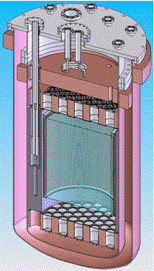Noble Travails: XENON10, LUX and Other Noble Liquid Detectors
Searching for Particle Dark Matter |
|
I will report on the latest results from the XENON10 liquid xenon-based detector which began searching for particle dark matter at Gran
Sasso in late 2006 ( http://xenon.brown.edu). The experiment has I will also discuss some of the other noble liquid target experiments
that are also providing competitive sensitivities in the race for the
direct detection of particle dark matter (WIMPs). Theoretical A growing understanding of how to exploit these characteristics, and
construct larger detectors, will allow further significant
improvements in the sensitivity of noble liquid experiments. My
discussion will include current and future noble liquid detector
experiments: LUX, miniCLEAN/DEAP, WARP, XENON, XMASS, ZEPLIN |
|
 |
 |